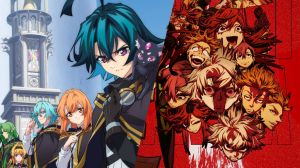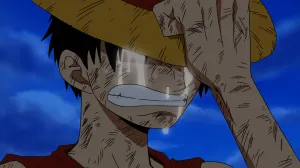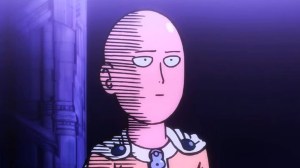
At first glance, Middlewest may seem like familiar territory for many readers. Set in the heart of America, a child with a difficult home life finds themselves on the adventure of a lifetime complete with an enchanted companion and a looming tornado with very personal stakes; Middlewest has some undeniable Wizard of Oz vibes, but don’t let that fool you. There’s a lot more to this story than somewhere over the rainbow.
Videos by ComicBook.com
Written by Skottie Young with art by Jorge Corona, Middlewest follows the story of a young boy named Abel who, along with his friend Fox (yes, he’s really a fox) attempts to navigate small-town life in the middle of the country. However, when his already difficult and strained relationship with his abusive father takes a terrifying turn, Abel has to learn to navigate the magical and chaotic world around him on an adventure “to quell a coming storm that knows his name.”
ComicBook.com recently spoke with Young and Corona about Middlewest, the challenges of taking on a story about emotional abuse, and the magical world of that story is set in.
ComicBook.com: How would you describe Middlewest to those who haven’t heard about it yet?
Skottie Young: It’s a type of rural fantasy, coming of age, adventure story. At the heart of that, is a young boy trying to deal with his broken home, understand the monster that is in his father and realizing that very monster may be inside him. It’s a throwback to the old Don Bluth, Jim Henson, Stephen King stories of the ’80s with some Miyazaki and Neil Gaiman flavor from today mixed in. All of these people are amazing at giving you a sense of wonder and magic but also dealing with some very heavy material at the same time. We wanted to try and tackle both of those with this book.
Where did the idea for Middlewest come from?
Young: A few places. I did a quick little [drawing] around three or so years ago. It was a little boy telling farmer he didn’t look like a wizard, and the farmer replied, “What does a wizard look like?” It was a random thought made up on the spot after the drawing was done. I didn’t have those word balloons in my head while drawing it. But it got me thinking about what magic could be hiding in the vast, quiet, eerie world that is the Midwest.
From there, it took may forms until I started mining some of the other lost projects I had sitting in folders. I had a story about a kid and his dad and hardships they face years after the home has been broken. I added that element to some of the [fantastical] things I was cooking up for the rural fantasy story and it started to take the story shape it is now.

The central character, Abel, has a lot to deal with — especially his father. How challenging was it to write those difficult scenes of emotional abuse? Where did you draw inspiration from for those brutal scenes?
Young: Those scenes make for difficult days. I have to put my head in a place that opens things up and exposes some raw nerves. I’ve spent most of my writing career being the funny guy and seeing how far I can push the “stupid” while sliding in some interesting questions about life here and there. But this one is me challenging myself to explore of tough, very real things that some kids have to go through in life and try to come to terms with the fact that it’s not always black and white on why or how it goes down.
As far as inspiration goes, I’ll leave that up to everyone to decide when they read the book. There’s a lot of personal things in this project, whether directly from me, or to the people I grew up with. I’ve heard back from many friends who have read the book who have opened up about similar things and feelings, so the easiest world to use when talking about the inspiration for this book is CHILDHOOD. All of our childhoods. The good and the bad.
As a Midwesterner myself — specifically, one from Kansas City where tornadoes aren’t an uncommon terror — there’s a gravity to Abel’s father’s anger turning into an actual tornado monster. Where did you get the idea for that particular transformation? Is there anything symbolic about that transformation?
Young: I lived in Illinois most of my life. I feel like it’s one of the windiest places on the planet. Once you’re outside of Chicago, there’s not buildings, or hills, or anything that blocks that wind. It’s just blowing… all the time. I would sit in my house at night, writing, and just hear the wind beating the walls outside. It felt so violent. Like it really did hate me and wanted to let to drive me crazy. When decided to deal with an abusive parent in this story, I knew I wanted there to a be a transformation that be both symbolic and actually happening. A tornado just makes sense.
As you mentioned, you know what real tornadoes are like, as do I. You have bright sunny day, where all makes sense in the world. Then, within minutes, without warning, the sky changes, gets very dark and BOOM… A force of absolute anger is tearing apart everything in its path. Not caring that on every other day, the same elements work in harmony together. Nurturing and giving each other purpose. But on that day, the pressures change and become too much to handle and there’s nothing for it to do but destroy anything it sees. And then, just like that, moments later. The sun is out again. As if all is right again. All expect the broken bones of the towns and people it just lashed out at.
That’s a bit of how I people can be. It’s sunny, then the anger hits and the pressure is too much and… then it’s sunny again. Like maybe it didn’t happen. Except for maybe a few things are broken. Bones or minds or spirits.
Abel has a talking fox for a friend. What was the inspiration for that particular character — and why did you choose a fox?
Young: Mostly because Abel was going to be out on the road, on a long journey and there needed to be a companion to keep him company. To challenge him. To guide… or misguide him. I’m a big Pinocchio fan so the idea of a Jiminy Cricket like character always appeals to me. In I Hate Fairyland Gert had Larry. In Rocket Raccoon, he has Groot. And in Middlewest, Fox plays that [role]. But instead of guiding Abel to do what’s right, fox sometimes leans towards what’s needed or necessary to survive out in the big, bad world. Foxes are pretty common here in the Midwest, and they have a reputation for being sly and savvy. Abel needs that.

There’s a curious pink liquid all throughout Middlewest. What can you tell us about those, as they seem to have a sort of science fiction-esque feel in a title that largely feels very fantasy-esque.
Young: You’ll learn more about it later in the second story arc. It’s called ETHOL and it’s the fuel of Middlewest. There are vast [farms] that grow orbs of it and its harvested and refined into fuel for the world. Again, using things from real life where we’ve learned to use corn grown in the Midwest for just about everything.
The art in Middlewest is at turns breathtaking and heartbreaking. What was your process for designing the characters and building the visual world of Middlewest?
Jorge Corona: There was definitely a contrast that we wanted to show when placing our main character in the land of Middlewest. The environment had to be overwhelming, Abel’s journey was one of exploration and it had to mimic the internal struggle the character had to go through. Taking all that we just decided to take the Midwest and turn it into a 70/30 ratio of realistic locations and fantasy elements. We wanted the reader to feel like this was familiar but hid enough magic behind every corner, magic that Abel would discover along with them. Reference were varied an went from landscapes and pictures of old Americana designs to concept art from sci-fi games and movies and classic animation. We wanted the book to be a love letter to the old Don Bluth movies where scenery and characters could be inspiring and threatening almost at the same time. When it came to the characters, in particular Abel, we needed him to be ordinary, he is a kid trying to figure out who he is and who he is going to be by himself, we needed a blank canvas that would be shaped as the adventure progressed.
Who has been your favorite character to draw in Middlewest?
Corona: I think Fox was my favorite to draw for the first few issues but once I got to spend some time with Bobby (Issue 4) she quickly became my favorite. I love characters with attitude and Fox and Bobby are definitely the best ones for that in Middlewest.
What were some of your major influences when creating Middlewest?
Corona: I love working on by fantasy epics, this book definitely allowed me to explore and expand my creativity and craftsmanship. Developing the unique voice for this book has been a great pleasure.
How do you feel Middlewest compares to your previous works?
Young: I’ve been telling funny, one and done episode stories for a long time. Or very short, 2-3 issue stories. This is one of the first times I’m really diving in and telling a bigger, epic story. I’m having blast.
Corona: I love working on by fantasy epics, this book definitely allowed me to explore and expand my creativity and craftsmanship. Developing the unique voice for this book has been a great pleasure.
What do hope readers take away from Middlewest?
Young: Honestly, I just want them to enjoy the adventure and see what they take away. My favorite part of telling stories is knowing what it means to me but hearing how others interpret it. Like a song, sometimes it’s a love song to some and it’s a break-up song to others.
Corona: I think the journey is my favorite part that I wish readers will tag along. My favorite stories to read are those with characters that embark on adventures of self-discovery through strange places and I hope that readers relate to that with Middlewest.
Middlewest #1 is on sale now.
The interview, which was conducted via email, has been edited for clarity.








